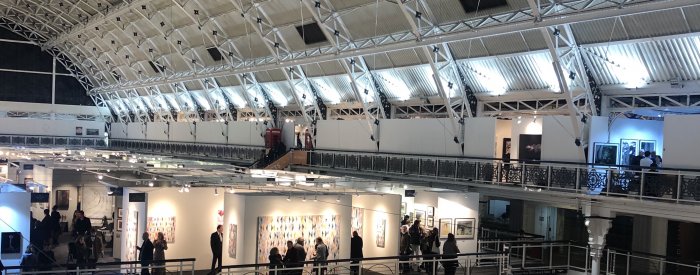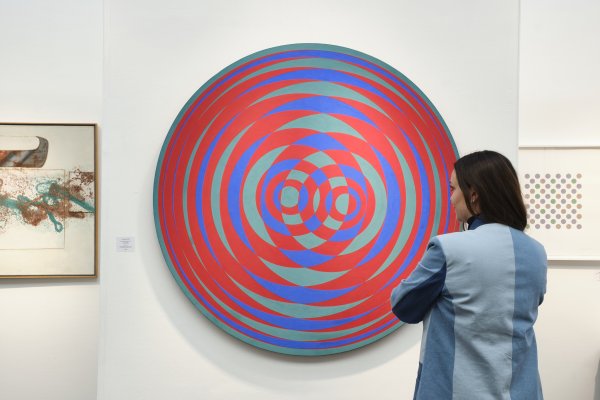
London Art Fair Signposts the Year of Mid-career Artist
23 January 2019
January’s London Art Fair opened an unpredictable year for galleries. Kallaway’s Kitty Langton reports on the trends emerging from the Fair as galleries factor in Brexit uncertainty and a slowdown in consumer spending.
The London Art Fair (LAF) provides something for every art buyer - a place where you can buy a Bacon or discover emerging talent. The Fair’s mainstay are smaller UK and overseas galleries offering a mix of predominantly entry level and mid-priced work mainly for buyers purchasing for their homes.
These galleries are most exposed to economic changes. This makes the trends appearing from LAF interesting to predict how such galleries might react during 2019.
Smaller galleries make up a crucial part of the art world ecosystem by nurturing artists throughout their career, and are often champions of the ‘mid-career’ artist.
As buyers become reluctant to splash out on a household name for fear of it losing value, or invest in an unknown who could turn out to be a flop, there is a gap in the market for mid-career artists.
Throughout the Fair this year, from the international displays, to the special photography exhibits and the regular British galleries, the standout artworks were by artists neither emerging nor established. Mid-career artists no longer mean middle of the road.
Peckham’s bo.lee gallery has exhibited the likes of Turner prize winner Richard Long, yet its selection this year was made entirely of mid-career artists. This included Tessa Farmer’s taxidermied insects in The Feast, and Susan Gunn’s cracked paintings made from gelatine, earth, natural paint pigments, marble dust and more.
Even those who may step into the “established” pool of artists, were still of an ilk who had yet to achieve the level of fame of their contemporaries. Notably, Trish Morrissey, who took centre stage at the Fair’s photography exhibition Photo50, with her eerie photography of family scenes.
The most striking display came from another highly acclaimed, yet under appreciated photographer: Marcelo Brodsky. Buenos Aires-based gallery Rolf Art dedicated its entire space to the Argentinian photographer’s series 1968: The fire of Ideas. Like Morrissey, Brodksy is yet to achieve the international recognition he deserves.
Non-British galleries, like Rolf Art, may feel more pressure at fairs to show off their biggest names. It’s their chance to show off their credentials on an international stage in a country where they may not have an established network of buyers.
The pressure was even higher for the Latin American galleries who, following a year of record-breaking sales for artists from the region, had a window of opportunity to draw in buyers looking to cash in on the latest trend.
The art market is an unpredictable beast. In a year where the world braces itself for a recession, the bigger galleries seen at Frieze continue to make record-breaking sales. The art world seems immune to political and economic disaster.
Smaller galleries, who can’t afford to bank on big names to draw in buyers, must now look to the unsung heroes of the art market: mid-career artists.
We should expect to see a greater focus on these artists in arts media coverage. This will allow galleries to maximise this moment, and boost sales, beyond exhibitions and art fairs.
London Art Fair proves they are the future of the art market, and are necessary to sustain smaller galleries in what will be a turbulent year.
If you are keen to increase your gallery’s profile and sales, contact Will Kallaway or Kitty Langton at hello@kallaway.com or call + 44 (0)20 7221 7883






